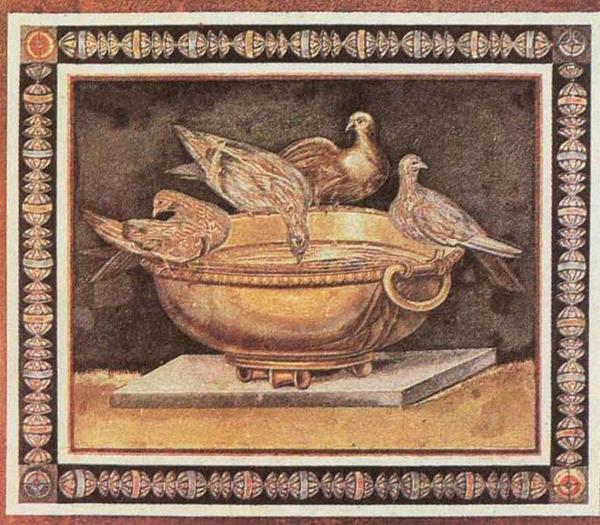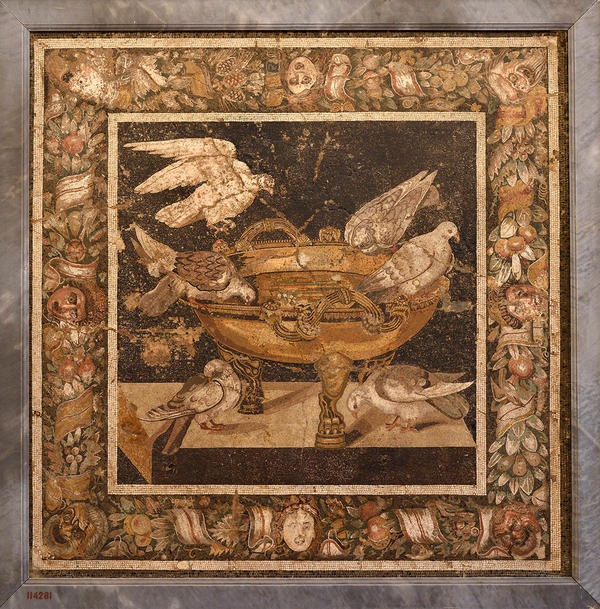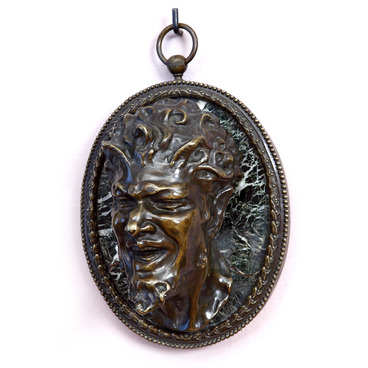This marble vase with doves was created in an unknown workshop in the second half of the 19th century. The vessel was not used for flowers or jewellery storage: it was a luxury item and decorated the interior by itself. The master sculpted the vase from marble with a chisel, a hammer and a file. He carefully chiselled out the feather pattern and delicate ornament around the edges of the bowl.
The Doves of Pliny
Время создания
Second half of the 19th century
Размер
55х47 cm
Техника
Marble, chiselling
Коллекция
Выставка
4
Открыть в приложении#1
Unknown workshop
The Doves of Pliny
#2
#4
At the end, he polished his work with emery, pumice and special pastes. In the process of polishing, the artist managed to create different textures: he made the bowl smooth and shiny, while the birds more matt.
#5
The subject of this vase repeated a famous antique mosaic. It was created by the Greek mosaic artist Sosus in the 2nd century BC. The work of the master was described by Pliny the Elder in his Natural History: ‘A bowl with doves sitting on its edge, drinking water from it and perking up’. Pliny said that the artist had even conveyed shadows on the water surface. In the history of art this subject, described by the ancient Roman author, was called the Doves of Pliny. The floor mosaic by Sosus was lost, but the subject became popular, and many masters repeated it in different versions.
#3
Mosaic from Hadrian’s Villa in Tivoli. Capitoline Museums.
The most famous repetition mosaic was made in the villa of the Roman emperor Hadrian, in Tivoli, near Rome. Cardinal Alessandro Furietti discovered it during excavations of the estate in the second quarter of the 18th century. They say that, at first, he took it for the original created by Sosus. But many researchers argue that Sosus’ work has been lost.
#6
Another version of the Doves of Pliny from the city of Pompeii is kept in the National Archaeological Museum of Naples.
Doves Drinking Water. Floor mosaic from the House of Mosaic Doves in Pompeii
#8
The echoes of the subject are found even in the early Christian mosaic of the 5th century. The mausoleum of Galla Placidia also had laid out images of two doves on the edge of a bowl. But there, this symbol received its own meaning: according to the art critic Viktor Lazarev, it portrayed ‘souls thirsting for God’.
Early Christian mosaic from the mausoleum of Galla Placidia, 5th century
#7
Subsequently, doves on the bowl were continuously repeated in decorative panels, frescoes and decorations. The vase from the Yaroslavl Museum of Fine Arts confirms that the popularity of the subject has been preserved for millennia.
#9
Yaroslavl Museum of Fine Arts
читать дальшескрыть
00:00
00:00
1x
The Doves of Pliny
Время создания
Second half of the 19th century
Размер
55х47 cm
Техника
Marble, chiselling
Коллекция
Выставка
4
Открыть в приложении
Поделиться






